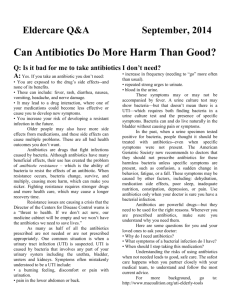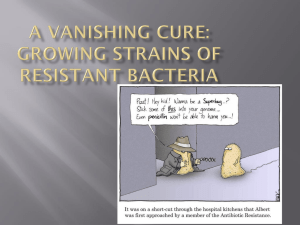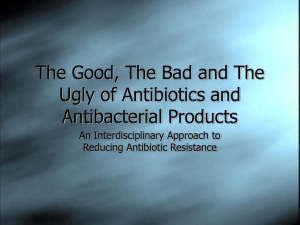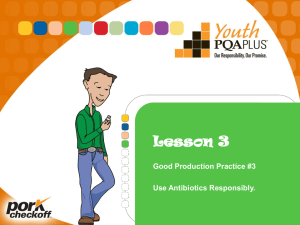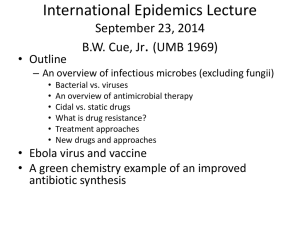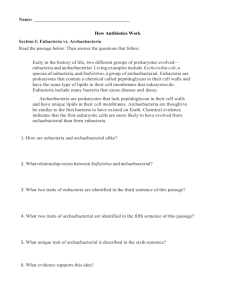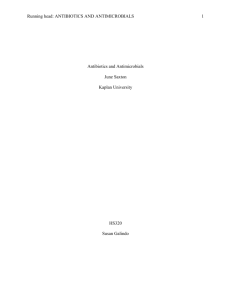University of Birmingham News Release
advertisement
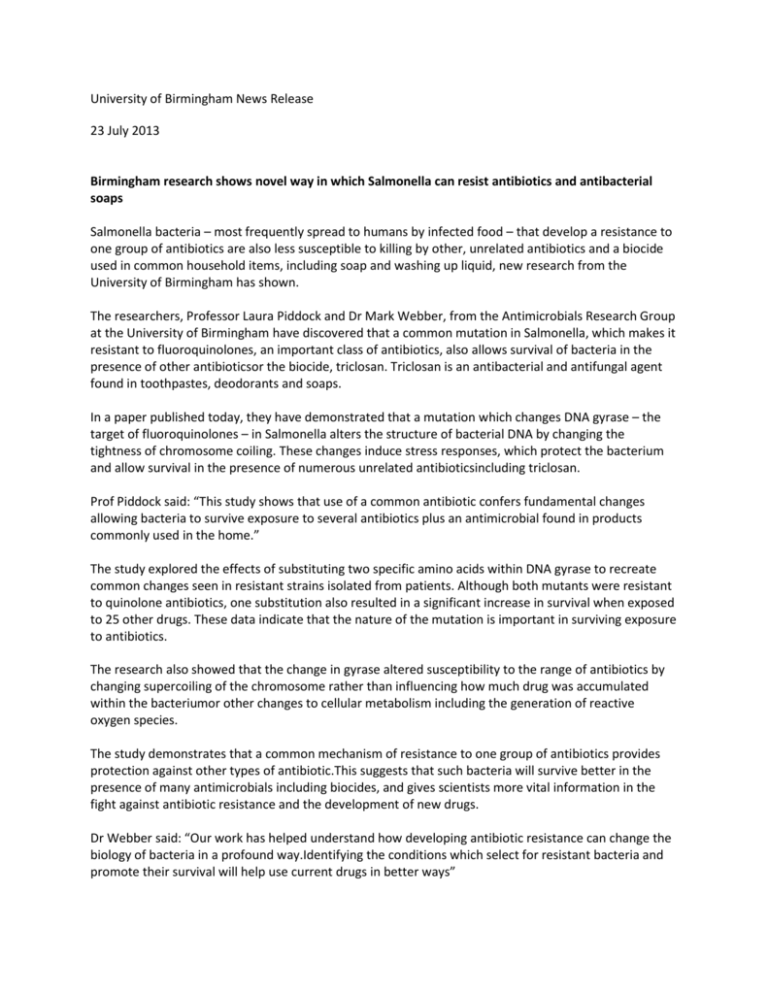
University of Birmingham News Release 23 July 2013 Birmingham research shows novel way in which Salmonella can resist antibiotics and antibacterial soaps Salmonella bacteria – most frequently spread to humans by infected food – that develop a resistance to one group of antibiotics are also less susceptible to killing by other, unrelated antibiotics and a biocide used in common household items, including soap and washing up liquid, new research from the University of Birmingham has shown. The researchers, Professor Laura Piddock and Dr Mark Webber, from the Antimicrobials Research Group at the University of Birmingham have discovered that a common mutation in Salmonella, which makes it resistant to fluoroquinolones, an important class of antibiotics, also allows survival of bacteria in the presence of other antibioticsor the biocide, triclosan. Triclosan is an antibacterial and antifungal agent found in toothpastes, deodorants and soaps. In a paper published today, they have demonstrated that a mutation which changes DNA gyrase – the target of fluoroquinolones – in Salmonella alters the structure of bacterial DNA by changing the tightness of chromosome coiling. These changes induce stress responses, which protect the bacterium and allow survival in the presence of numerous unrelated antibioticsincluding triclosan. Prof Piddock said: “This study shows that use of a common antibiotic confers fundamental changes allowing bacteria to survive exposure to several antibiotics plus an antimicrobial found in products commonly used in the home.” The study explored the effects of substituting two specific amino acids within DNA gyrase to recreate common changes seen in resistant strains isolated from patients. Although both mutants were resistant to quinolone antibiotics, one substitution also resulted in a significant increase in survival when exposed to 25 other drugs. These data indicate that the nature of the mutation is important in surviving exposure to antibiotics. The research also showed that the change in gyrase altered susceptibility to the range of antibiotics by changing supercoiling of the chromosome rather than influencing how much drug was accumulated within the bacteriumor other changes to cellular metabolism including the generation of reactive oxygen species. The study demonstrates that a common mechanism of resistance to one group of antibiotics provides protection against other types of antibiotic.This suggests that such bacteria will survive better in the presence of many antimicrobials including biocides, and gives scientists more vital information in the fight against antibiotic resistance and the development of new drugs. Dr Webber said: “Our work has helped understand how developing antibiotic resistance can change the biology of bacteria in a profound way.Identifying the conditions which select for resistant bacteria and promote their survival will help use current drugs in better ways” Notes to editors The paper Clinically relevant mutant DNA gyrase alters supercoiling, changes the transcriptome and confers multi-drug resistanceis published in the journal mBio today (23 July). Full list of authors and affiliations: Mark A. Webber1, Vito Ricci1, Rebekah Whitehead1, Meha Patel1, Maria Fookes2, Alasdair Ivens3, and Laura J.V.Piddock1* 1 Antimicrobials Research Group, School of Immunity and Infection, Institute of Microbiology and Infection, The University of Birmingham, Edgbaston, Birmingham, B15 2TT, United Kingdom. 2 The Wellcome Trust Sanger Institute, Wellcome Trust Genome Campus, Hinxton, Cambridge, CambridgeshireCB10 1SA, UK. 3 Centre for Immunity, Infection and Evolution, University of Edinburgh, King’s Buildings, West Mains Road, Edinburgh, EH9 3JT, United Kingdom The research was funded by the BBSRC and MRC. For further information, or to interview Prof Piddock or Dr Webber contact Kara Bradley, University of Birmingham press office, +44(0)121 414 5134 .


